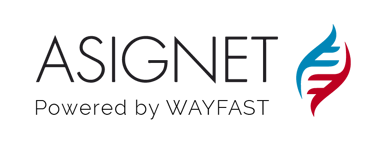Managing IT expenses can be daunting, especially when dealing with multiple vendors and contracts....
Controlling the Communication Costs of Remote and Hybrid Teams

In the last few decades, we’ve seen a major shift in how companies operate, and the COVID-19 added a dramatic spin on that change. Many businesses now rely on remote and hybrid team collaboration to do their work, causing more costs than ever before. The average company spends approximately $210 per employee each month on UCaaS (unified communications as a service) alone. This has caused many businesses to seek new ways of controlling the increasing communication costs of remote and hybrid teams.
But many businesses don’t see the problem. The idea that we can collaborate without speaking to one another is revolutionary, and companies are raving about it. Still, there’s a dark side: these new ways of collaboration aren’t always budget-friendly. Plus, they often cause more problems than they fix by creating additional costs you didn’t expect.
When looking at your UCaaS vendor billing statements (or lack thereof), consider what this means for your company regarding visibility, usage analytics, asset management process efficiency, communications platform management, and identity & access management software benefits. These are all areas where proper cost control strategies will help any business thrive in today’s economy while saving money on their monthly expenses.
Businesses need to rethink how they collaborate and look at how these remote teams can be more efficient. By doing this, businesses will find it much easier to control their communication costs while making their people feel like they’re in an actual office environment. This means better collaboration within your company’s workforce and less time wasted on unnecessary travel expenses that often go unnoticed by management.
UCaaS Expense Management
If you are looking for a cloud-based expense management system, UCaaS Expense Management may be the right choice. UCaaS (Unified Communications as a Service) is an umbrella term that includes everything from telecom to software solutions like your CRM application and hosted email service. This type of solution is designed for SMB and Enterprise businesses that want to consolidate their communications expenses. This solution includes a centralized online portal, where users can manage all of the services associated with telecom expense management (TEM).
UCaaS Expense Management is great because it offers visibility into your entire wireless bill and uses analytics like who’s using what when they’re using it and for how long. With this information at your fingertips, you can easily identify trends in device usage and which devices are the most optimal to support company growth. Platforms like Microsoft Office 365, and their Microsoft Teams applications let your employees have all the communication channels in one place: chat, mails, messaging, video calls, extension numbers, DDI, etc.
Technology Expense Management
If you want a more traditional TEM solution that focuses primarily on fixed and wireless expense management (WEM), Technology Expense Management may be the way to go. This type of solution offers traditional TEM features, such as detailed usage reports and device inventory management, but does not include UCaaS specific features like expense trend analysis, user provisioning, bandwidth allocation, dial plans, or a control portal.
Technology Expense Management is great for businesses that already use an online portal for their technology expenses (i.e., billing platform, expense management application, etc.). This solution integrates easily with the pre-existing portal to provide users with visibility into their entire wireless bill.
Both UCaaS Expense Management and Technology Expense Management are great options for businesses looking for a solution to manage communications expenses across multiple devices. The differences between them are in the details. While UCaaS Expense Management offers all of the features that you would expect from a traditional TEM solution while also adding additional visibility into your technology expenses. Technology Expense Management has the advantage of integrating with other existing platforms.
However, not always have to choose between options. Asignet is the only vendor to provide the best of both worlds, all included in the same platform: the best technology expense managed service and a unique approach to UCaaS expense management.
1) License Volume and Usage:
There are many different types of licenses, and it can be hard for large businesses to track things like Zoom or MS Teams licenses and usage by traditional methods. This leads to more human error when trying to inventory all the various platforms employees use. Also, not all platforms integrate the different channels. Maybe your employees have one provider for the video conferencing platform and another one for VoIP telecom.
2)Pricing and Licensing Structures:
No two UCaaS systems are the same, making it difficult to compare providers and get the best deal. This can also lead to overspending on services that are not needed. For example, many companies require their employees to use Google Hangouts for video conferencing due to its ease of connecting with others in different offices or at home. However, some may find third-party apps like Zoom more user-friendly than Hangouts when collaborating remotely across multiple devices throughout each day. Most enterprises that have Microsoft Office 365, also use their Microsoft Teams platform for an all-in-one solution.
3)Visibility:
An important part of controlling your UCaaS expenditure should be the ability to see which products and features are being used by employees so you can ensure everyone is getting their money’s worth. Still, without proper visibility, this becomes very difficult because there might not be a problem at all if usage rates and consumption patterns drop below certain thresholds (i.e., maybe only 80% of licenses were ever even installed). If you do find yourself overpaying for software or services, then doing something about those high costs could prove challenging as well since you’re already locked into contracts with providers who will likely want compensation before agreeing to any changes.
Reduce Costs with a UCaaS Expense Management Solution
A UCaaS Expense Management Solution can help you cut your expenses by simplifying and automating the expense management process.
The following are a few of the advantages of using UCaaS Expense Management Solution:
Monitor License Volume and Usage
The cost of your UCaaS platforms is tied to the number of licenses you run on. However, it’s difficult to keep track of this, especially if multiple people use these tools. Expense management software can monitor each user’s license usage so that no one runs against their limit.
Predictive Analytics
The software can automatically analyze each employee’s phone bills to determine how much they spend on calls. The solution then uses this information to provide detailed reports detailing what employees are spending the most money on and which vendors need to be negotiated. This is an excellent feature since it allows managers to save money by changing the vendor contract.
Cost Optimization
The software can also help users reduce costs and save money on their phone bills each month through volume discounts, prepaid mobile plans, and international calling options. In addition, the solution can automatically detect which of these features would be best for your company so that you don’t have to do all of the legwork.
UCaaS cost management solutions are all about UCaaS visibility. You want to see what’s going on with your UCaaS spend, especially knowing that UC resources are one of the most significant expenses in the IT budget these days. Asignet provides various solutions that fit your business, and it is also important to note that it gives control over how much and where the money is being spent in real-time. You can also see how much UCaaS resources are being used – including extensions, locations, techs, and more – at any given time to make sure usage is where it should be for optimal UC saving





.png?height=200&name=Blogs%20(9).png)
.png?height=200&name=Future%20(3).png)